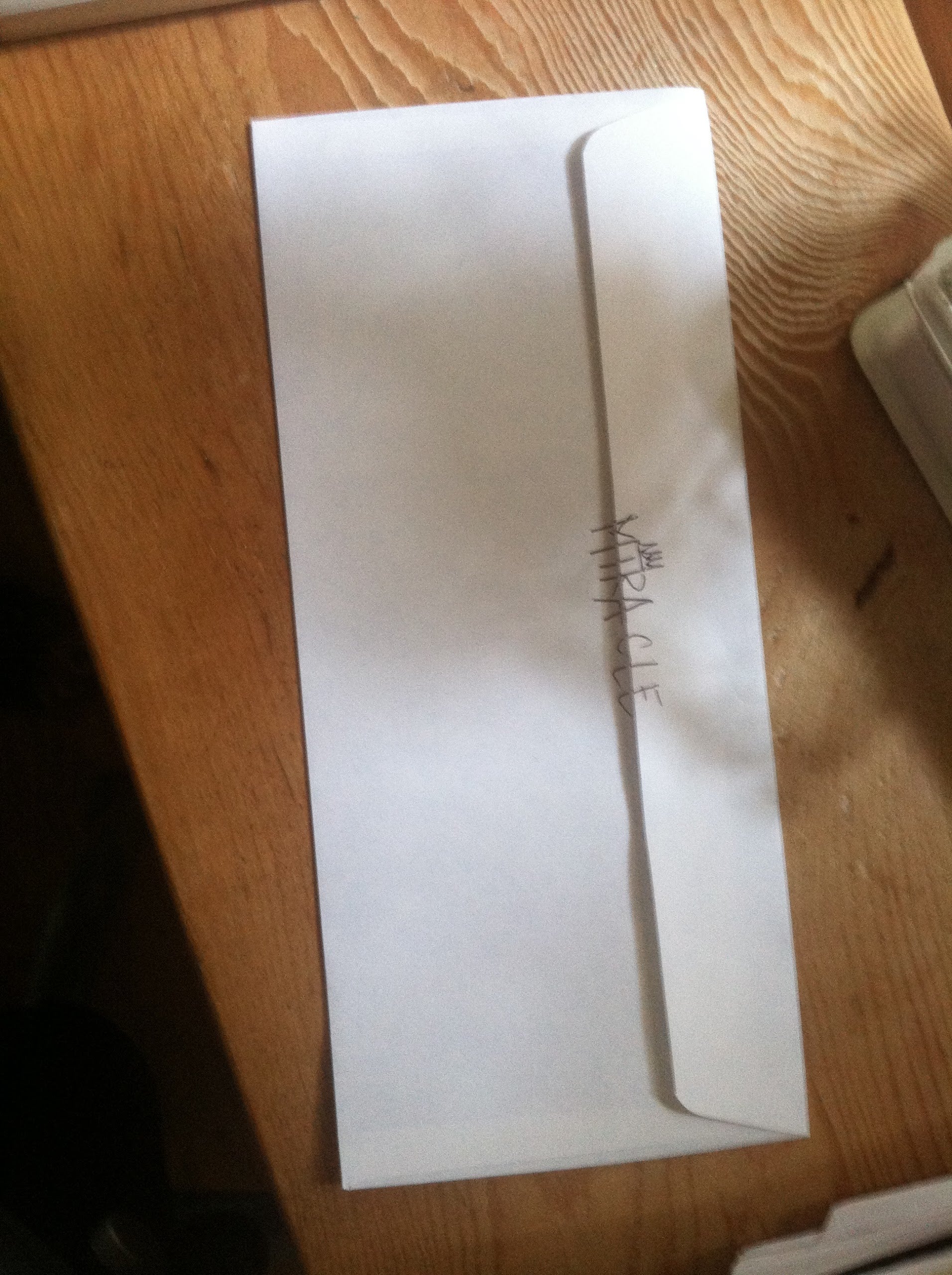Melissa Chadburn is a lover and a fighter, a union rep, a social arsonist, a writer, of color, smart, edgy and fun. Her work has appeared in Guernica, Salon, and the Rumpus, among others. In Ask a Freelancer, Chadburn fields questions about writing, the blogosphere, platform building, and all things scary. She doesn’t presume to know everything but she knows people that know more things than her and if there’s one thing she’s learned it’s that there’s nothing to be gained from withholding information. Reach her at fictiongrrrl(at)gmail.com or follow her on Twitter. She loves your whole outfit right now.
Dear Freelancer,
I’ve been writing for a while. I have a couple of stories and essays that I’d like to pitch for publication. But it seems like there are a lot of hoops to jump through to get noticed. Especially now with all the online journals. It seems the slush pile has grown. Some people say that the only way you can get your work read is if you have an agent. Also I live in a small suburb so I don’t have access to literary events or places where I can go meet editors. Most of the stories and essays I pitch are online. How do I pitch a story to editors without disappearing into the slush pile?
—Slushy in the Suburbs
***
Dear Slushy,
I have a few concrete tips that have helped me weasel my way to the top of the slush pile.
First off, the basics:
Address your query directly to the editor you’re submitting the piece to. If you don’t know who the fiction editor is, for example, you can find it on the masthead. Online, the masthead is usually found in the “About” section of the site. This alone has gotten me personal responses. Even if that personal response is a rejection, pay attention to who signs the letter. It may be an intern or a “reader” —and address your future correspondence to that person.
Refer to a specific piece or story from this publication in your first paragraph of the letter. Exhibit that you are familiar with the type of work they publish and why you specifically are querying them. Something simple like, “this piece aspires to share the same aesthetic as Such and Such, from your Spring 2013 issue.” This small act has increased my personal response rate by 80%. Yes, I measured.
Also, even though you live in a small suburb, there are conferences held every year that could garner you some face to face exposure to editors—for example the Association of Writing Professionals, or AWP conference, that occurs annually. At these conferences major publications usually host a table where you can meet the editors and talk about what it is they’re looking for. It really is wonderful to meet them in person; I think you can learn a lot about an editor’s aesthetic preferences when you are face to face discussing books or their recent issue of whatever.
That’s the basics. But I also wanted to take this opportunity to use my golden bullet: Ask The Editor. As mentioned in my bio I don’t presume to know everything, but I do have friends that know things I don’t. Every now and again there will be a question I find better suited to people I know. So who better to tell you what editors like than other editors?
Here’s what I got from my own awesome editor of this very website, who is the greatest lady to ever hammer out my words into pretty silvery things, and a few tips she’d list straight, from the horse’s email:
- When I first started as an editor, one of my greatest shocks was realizing that I actually had to make decisions about other people’s writing. Because who the hell am I to do that? I mean really?? Then I gradually realized… I’m a READER. Which is all we are all. Which is all that really matters. The best thing I could do was to be a tuned in, yet totally naive reader, and be completely genuine in my role as a reader. If I didn’t get it, chances are most people wouldn’t. So that’s probably my number one piece of advice for a pitch email: Remember that the person on the other end is, after all is said and done, just a reader. And you need to engage them the same way. To put it kind of harshly, they have no vested interest/requirement to care/ just because it’s their job as an editor. They are a reader above all else—the better the editor, the better the reader.
- To that end, have a good elevator pitch. This is your, “yo, I’m in an elevator with you for about 30 more seconds, this is what my book is about” description. It should be that level, too—your friend, your co-worker, your sister, your grandma. What’s this story really about? And why is it exciting? Try for like 2-3 sentences. This is probably the most important place you’ll describe your book, so get it right. If you can’t get people hooked on an elevator pitch, it’ll be a steep uphill battle to get them to read anything else.
- Like you said, do your homework. I had one editor friend who de facto rejected anyone that misspelled his name or didn’t get it right, sending to generic admissions etc, just on principle. Kind of harsh, maybe, but sometimes we have to find a way to minimize the sheer volume (sad but true). Also, follow directions. Don’t send the whole thing if they don’t ask you to.
- Also do your homework on why this place—what else have they published that is like your piece of work? And why will it fit in well there? Very important. Don’t try to fit a square peg into a round hole. Once, as an academic editor at a university press, I received a submission that was a binder full of gay erotica written atop the author’s homemade (also gay erotica) photos. This certainly brightened my day, and yes, it stood out in the slush pile. Did we publish it? No.
- Lastly, pull strings. Sadly, it really does matter. Anyone that sent me something through a friend or a current author or anyone I worked with and thought well of, I’d need to give serious consideration to, because a) I do trust opinions of people I already work with, that’s why I work with them; b) you want to respect that current relationship; and c) it’s how things work—again, a way of sorting through the volume.
- A final word on that volume. All these poor editors are people who got in the business because they have a deep love of books, of writing, of literature. They all imagined they’d be like Ezra Pound to T.S. Eliot, with an elegant fountain pen, editing masterpieces. Instead, they never have time to actually “read” or “edit” except at home; instead they’re answering emails and dealing with contracts and production and all sorts of niggly business-y things that aren’t necessarily their favorite thing ever. And on top of that, they are literally buried under a crushing mountain of things that need to be edited, read and thought about. Remember that and have pity on this straggling, struggling breed of readers. Try not to nag incessantly, but also don’t be afraid of a gentle reminder now and then.
My own editor Cinderella story goes like this: I began by sending a boilerplate query letter to an editor at a top tier journal. I did reference a specific essay or story but only had the name of the managing editor of the journal. Six months later I got a response. It was a rejection but there was a little handwritten note in the corner—signed by the Asst. Editor. I sent my next query directly to her, like I’ve suggested you do. And again six months later I got a response still a rejection—but another hopeful note. So far, we have had a three year correspondence mostly by marginalia of my query letters. Since then this editor has experienced some personal loss in her family and I have sent my condolences (again by way of query). We finally got to meet and hug for the first time last AWP. This story doesn’t end with me finally getting published in the top tier journal. This story ends with me actually getting out of the slush pile. A much greater privilege. I have a friend in this editor. A friend whose opinion I respect.
One last little thing. Here’s something I enjoy doing for myself, if I have to submit something by snail mail and include a S.A.S.E. for a reply: I write a little note to myself on the lip of the envelope. Like this:

So it’s the first thing I see when I get it back.
Shine on, Slushy Mcslusherson.
—Freelancer
Photos by nojan/Flickr and by Melissa Chadburn


